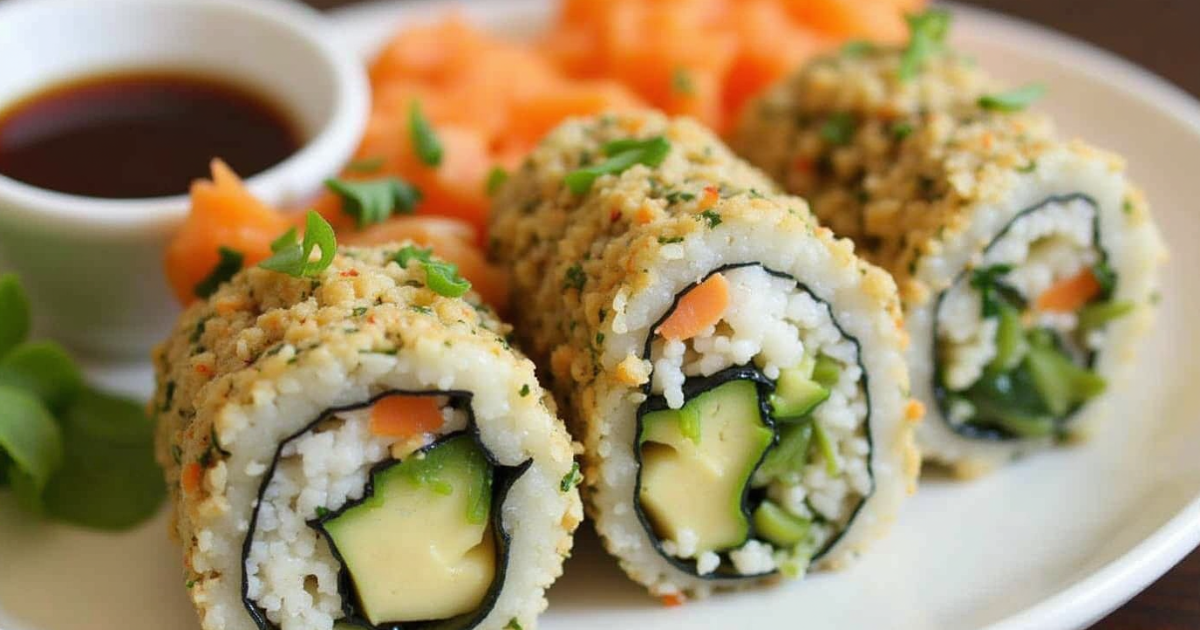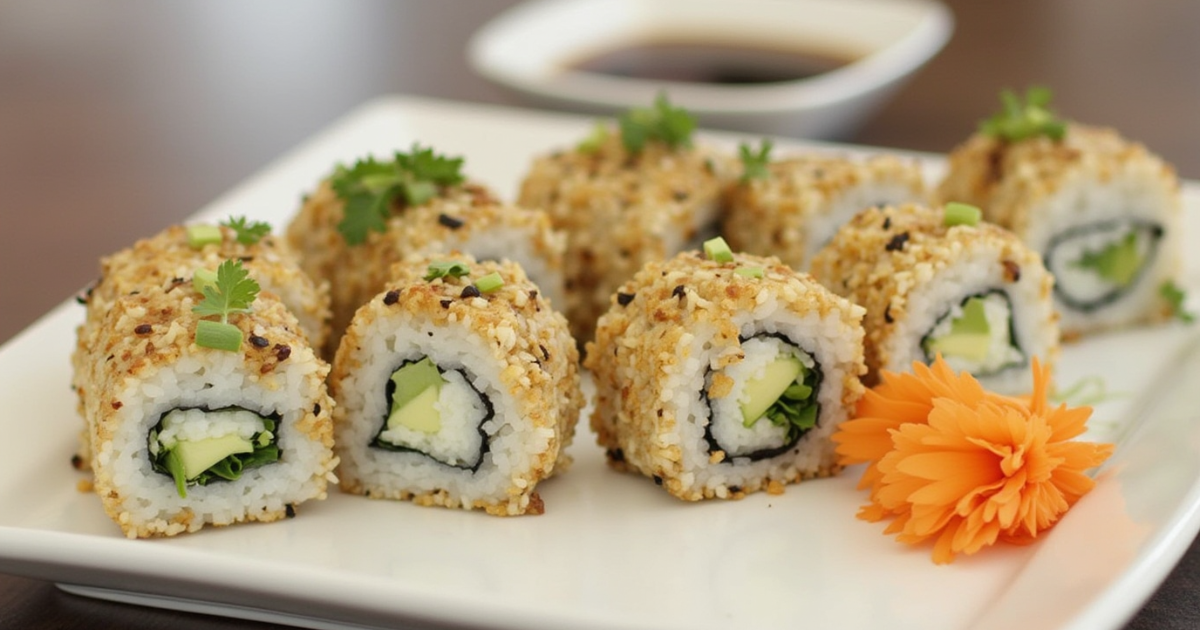
Kimbap (or gimbap) is one of Korea’s most beloved dishes, often compared to Japanese sushi but with its own unique flavors. This Korean sushi roll is made with seasoned rice, fresh vegetables, and protein fillings, all wrapped in dried seaweed (kim, 김). Unlike sushi, kim-bap uses sesame oil instead of vinegar, giving it a distinct nutty aroma and rich taste.
Kim-bap is a popular street food and picnic dish in Korea, perfect for a quick snack, lunchbox, or potluck. It comes in many variations, including vegetable kimbap, bulgogi kimbap (beef), tuna mayo kimbap, and spicy kimchi kim-bap.
In this guide, I’ll show you an easy, step-by-step kim-bap recipe that anyone can make at home. Whether you’re new to Korean cuisine or looking for a fun recipe to try, this homemade kim-bap will be a delicious addition to your meal rotation! 😊
Now, let’s dive into what makes kim-bap special and how you can prepare it with simple ingredients. 🚀
Table of Contents
What is Kimbap? (Korean Sushi Rolls Explained)
Kim-bap (also spelled gimbap, 김밥) is a Korean seaweed rice roll made by wrapping seasoned rice and various fillings in dried seaweed (kim, 김). It is often compared to Japanese sushi, but there are key differences in flavor, preparation, and ingredients.
Kimbap vs. Sushi – What’s the Difference?
Many people mistake kim-bap for sushi, but they are quite different:
- Rice Seasoning – Kim-bap rice is seasoned with sesame oil and salt, while sushi rice uses vinegar and sugar.
- Fillings – Kim-bap typically includes cooked or pickled ingredients like egg omelet, bulgogi (marinated beef), tuna, and pickled radish. Sushi often features raw fish.
- Dipping Sauces – Sushi is commonly dipped in soy sauce with wasabi, but kim-bap is usually eaten as-is, with no dipping sauce required.
Popular Kimbap Variations
Kim-bap is highly versatile, with many delicious variations:
- Classic Kim-bap – Made with pickled radish (danmuji), carrots, spinach, egg, and sometimes fish cake.
- Bulgogi Kim-bap – Features marinated beef for a savory, protein-packed roll.
- Tuna Mayo Kim-bap – Uses a tuna salad mixture (tuna, mayonnaise, and sometimes sesame seeds).
- Vegetable Kim-bap – A healthy option with cucumbers, carrots, spinach, and radish.
- Spicy Kim-bap – Filled with spicy kimchi or spicy pork for a bold, flavorful kick.
Why is Kimbap So Popular?
Kim-bap is a staple in Korean street food, lunchboxes, and picnics because it’s:
✔ Easy to eat on the go – No need for chopsticks!
✔ Customizable – You can fill it with anything you like.
✔ Healthy and nutritious – Packed with protein, veggies, and fiber.
Now that you know what kim-bap is, let’s go over the essential ingredients you’ll need to make it at home! 🍙✨

Essential Ingredients for a Classic Kimbap Recipe
To make authentic kim-bap (Korean sushi rolls) at home, you’ll need a combination of fresh ingredients that provide the perfect balance of flavor, texture, and nutrition. Here’s a breakdown of the key ingredients:
1. Kim (김) – Dried Seaweed Sheets
- Used to wrap the rice and fillings together.
- Look for Korean roasted seaweed (gim), which is slightly seasoned for extra flavor.
- Available at Korean grocery stores or online.
2. Bap (밥) – Cooked Rice
- Short-grain white rice works best for the perfect sticky texture.
- Seasoned with sesame oil and salt (unlike sushi rice, which uses vinegar).
- Avoid overcooking—rice should be slightly firm and not mushy.
3. Danmuji (단무지) – Pickled Yellow Radish
- A signature sweet and tangy ingredient in kimbap.
- Adds crunch and color to the roll.
- Found in the refrigerated section of Korean or Asian markets.
4. Protein Options (Choose one or mix for variety!)
- Egg Omelet Strips – Lightly seasoned and sliced thinly.
- Bulgogi (Marinated Beef) – For a rich and savory kimbap.
- Tuna Mayo Mix – Canned tuna mixed with mayonnaise and a pinch of salt.
- Crab Sticks or Fish Cake – Common protein choices for a classic taste.
5. Fresh Vegetables (Add for crunch and color!)
- Carrots – Julienne and lightly stir-fry or blanch.
- Cucumber – Adds a refreshing crunch.
- Spinach – Blanched and seasoned with sesame oil and salt.
6. Sesame Oil & Toasted Sesame Seeds
- Brushed on the finished roll for a nutty aroma and shine.
- Toasted sesame seeds sprinkled on top enhance the flavor.
With these essential ingredients, you’re ready to assemble a delicious homemade kimbap! Next, let’s go through the step-by-step guide on how to roll the perfect kimbap. 🍙✨
Step-by-Step Guide: How to Make Kimbap at Home
Making kim-bap at home is easy once you get the rolling technique right. Follow this step-by-step guide to create the perfect Korean sushi rolls with simple ingredients.
Step 1: Prepare the Ingredients
Before assembling your kimbap, have all your ingredients ready:
✔ Cook the rice – Use short-grain white rice, season with sesame oil and salt. Let it cool slightly.
✔ Slice the fillings – Julienne the carrots, cucumber, and pickled radish into thin strips.
✔ Cook the protein – Make an egg omelet, bulgogi (marinated beef), or tuna mayo mix.
✔ Blanch the spinach – Briefly cook and season it with sesame oil and salt.
Step 2: Assemble the Kimbap Roll
✔ Lay a sheet of seaweed (kim) on a bamboo mat (shiny side down).
✔ Spread a thin layer of rice evenly over ⅔ of the seaweed, leaving space at the top.
✔ Arrange the fillings in the center of the rice.
Step 3: Roll the Kimbap
✔ Use the bamboo mat to gently roll the kimbap, applying light pressure to keep it tight.
✔ Seal the roll by dabbing a little water or rice at the edge of the seaweed.
✔ Brush the roll with sesame oil for extra flavor and shine.
Step 4: Slice and Serve
✔ Use a sharp knife coated with sesame oil to prevent sticking.
✔ Cut into bite-sized pieces (about ½ inch thick).
✔ Sprinkle with toasted sesame seeds for the final touch.
Now your homemade kim-bap is ready to enjoy! Up next, let’s look at some tips for making the best kim-bap every time. 🍙✨
Tips for the Best Homemade Kimbap
Making kim-bap is easy, but a few expert tips can take your rolls from good to perfectly delicious! Here’s how to ensure your homemade kim-bap turns out great every time.
1. Prevent the Rice from Sticking
- Lightly coat your hands with sesame oil before handling the rice.
- Use a sharp knife coated with sesame oil when slicing the kim-bap to get clean cuts.
2. Don’t Overfill the Roll
- Keep your fillings in a thin, even layer to prevent the roll from bursting.
- If you’re new to rolling kimbap, start with fewer ingredients and work your way up.
3. Roll Tightly for the Best Shape
- Use a bamboo mat (makisu) to help roll the kim-bap evenly.
- Apply gentle but firm pressure to keep everything compact.
4. Eat Fresh for the Best Taste
- Kim-bap tastes best right after making it.
- If storing, wrap each roll tightly in plastic wrap to keep the seaweed from drying out.
5. Try Different Kimbap Variations
- Bulgogi Kim-bap – Marinated beef for a rich, savory roll.
- Tuna Mayo Kim-bap – A creamy, flavorful twist with canned tuna and mayo.
- Spicy Kim-bap – Add spicy kimchi or gochujang (Korean chili paste) for extra heat.
- Vegetable Kim-bap – A healthy, refreshing option with carrots, spinach, cucumbers, and radish.
With these pro tips, you’re now ready to roll perfect kim-bap every time! Up next, let’s explore how to serve kim-bap and what to pair it with. 🍙✨

Serving Suggestions & What to Eat with Kimbap
Kim-bap is delicious on its own, but pairing it with Korean side dishes and dipping sauces can elevate your meal. Here are some serving ideas to enjoy your homemade kim-bap to the fullest!
1. Traditional Way to Eat Kimbap
- No dipping sauce needed! Unlike sushi, kim-bap is already seasoned with sesame oil and salt, so it’s typically enjoyed as is.
- It’s a perfect grab-and-go meal, making it a popular lunchbox or picnic food in Korea.
2. Dipping Sauces for Extra Flavor
While not traditional, some people like to dip kim-bap in sauces for an added kick:
- Gochujang (고추장) Sauce – Spicy Korean red pepper paste mixed with a bit of sesame oil.
- Soy Sauce with Sesame Oil – A simple and flavorful dip for a savory touch.
- Ssamjang (쌈장) – A thick, umami-packed soybean paste dip.
3. Side Dishes (Banchan) to Pair with Kimbap
Kim-bap pairs well with classic Korean side dishes (banchan) like:
- Kimchi (김치) – The spicy, tangy flavor of fermented cabbage balances kimbap’s mild taste.
- Pickled Radish (단무지) – A must-have for an extra crunch.
- Korean Fish Cakes (어묵볶음) – Savory stir-fried fish cakes add a delicious side to your meal.
4. Kimbap as a Full Meal
If you want to turn your kim_bap into a heartier meal, try serving it with:
- Tteokbokki (떡볶이) – Spicy and chewy Korean rice cakes that contrast perfectly with kimbap.
- Doenjang Jjigae (된장찌개) – A rich and savory Korean soybean paste stew.
- Egg Drop Soup (계란국) – A light and comforting broth to complement the kimbap.
5. How to Store and Reheat Kimbap
- Best eaten fresh, but if needed, wrap leftover kim-bap tightly in plastic wrap to keep it from drying out.
- Avoid refrigerating—cold rice hardens, making it less enjoyable.
- If refrigerated, lightly pan-fry the slices with sesame oil for a tasty alternative!
Now that you know the best ways to enjoy kimbap, it’s time to roll up your own batch and dig in! 🍙✨ Let me know how your homemade kim-bap turns out! 😋
Conclusion
Kim-bap is a versatile, delicious, and easy-to-make Korean dish that’s perfect for any occasion—whether it’s a quick snack, picnic food, or lunchbox favorite. With just a few simple ingredients like seasoned rice, vegetables, and protein, you can roll up a batch of homemade kim-bap that’s both flavorful and nutritious.
From classic kim-bap to creative variations like bulgogi kimbap, tuna mayo kimbap, and spicy kimchi kimbap, there are endless ways to customize this dish to your liking. Plus, with the right rolling technique and pro tips, you’ll be making perfect kim-bap in no time!
Now it’s your turn! 🎉 Have you tried making kim-bap at home? Share your experience in the comments below. And if you love this recipe, don’t forget to pin it, share it, or tag me when you make it! 🍙💛
Happy rolling and enjoy your homemade kimbap! 😊✨
Share your thoughts and tips in the comments below! For more tasty recipes, visit FullMenuRecipes.com and discover more delicious ideas!
Thanks for reading, and happy baking! 🍞✨
